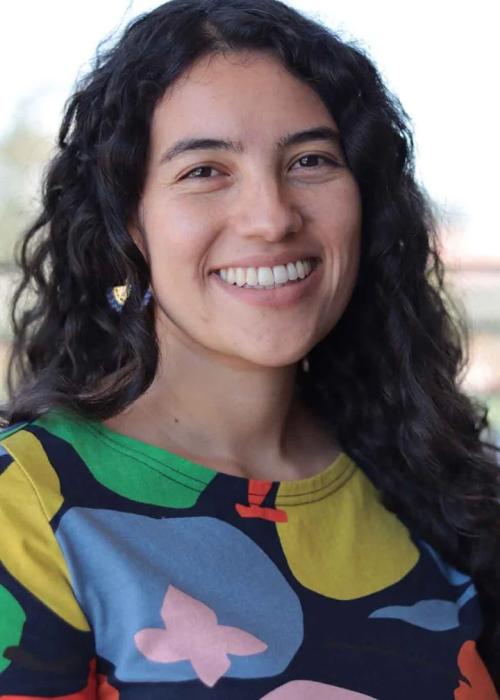
Melissa Guzman: 'Using Occupancy Models to Infer Trends of Bee Biodiversity in North America'

What's the latest information about bee biodiversity trends in North America?
Assistant professor Laura "Melissa" Guzman of the University of Southern California (USC) will speak on "Using Occupancy Models to Infer Trends of Bee Biodiversity in North America" at the April 29th seminar hosted by the UC Davis Department of Entomology and Nematology.
Her seminar begins at 4:10 p.m. in 122 Briggs Hall and also will be on Zoom. The Zoom link:
https://ucdavis.zoom.us/j/9 5882849672
"Historical museum records provide potentially useful data for identifying drivers of temporal trends in species occupancy, however, because these records were not explicitly collected for this purpose, methodological developments are needed in order to enable robust inferences," Guzman writes in her abstract. "Occupancy-detection models, a relatively new and powerful suite of methods, are potentially useful here, because these models allow us to account for changes in collection effort through space and time. Applying such occupancy-detection models to historical museum records is not a straightforward process, as these models have strict data requirements that museum data usually do not meet."
"Here I will present a methodological road-map for using occupancy models to analyze historical museum records. I use simulated data-sets to identify how and when modeling decisions and patterns in data can bias inferences. I will focus primarily on the consequences of contrasting methodological approaches for dealing with species ranges and non-detections in both space and time. Finally, I will present an application of these methods to bees in North America and will present drivers of change for these species in the past 30 years."
Guzman says that the "overarching goal of my research is to develop statistical and computational methods to leverage large biodiversity datasets to learn about ecological processes. While we know that the distribution of some species is changing, it is actually very difficult to make reliable inferences as to which species are declining and by how much from the often messy and complex historical and spatial datasets that we have to work with — for example, historical museum records, where species occurrences are aggregated from studies with different sampling procedures."
"In order to address this gap," Guzman says, "my research focuses on determining if and how statistical models can be applied to historical records without yielding biased trends. In my research I also apply these statistical models to determine how the distribution of pollinators has changed through time, where museum records provide lots of information. I am also interested in determining which drivers (e.g. pesticide use, climate change, land use change, etc.) are causing the most decline of the most pollinator species."
"Another aspect of my research is to understand the processes that shape communities, for example, I have combined experiments and modelling to understand how the structure of body size in a community affects the stability of food webs. In more recent work, I used large-scale simulations and machine learning to identify the signal of metacommunity processes in ecological time series."
Guzman is a Gabilan assistant professor in USC's Department of Biological Sciences. She received two degrees from McGlll University: her bachelor's degree (2012) in biology and her master's degree (2013) in ecology and evolution. She obtained her Ph.D. at the University of British Columbia.
Three of her latest research publications:
- Guzman, L. M., Johnson, S. A., Mooers, A. O., M’Gonigle, L. K. (2021). "Using historical data to estimate bumble bee occurrence: variable trends across species provide little support for community-level declines." Biological Conservation. Vol. 257, pp. 109141.
- Guzman, L. M., Chamberlain, S. A., Elle, E. (2021). "Network robustness and structure depends on the phenological characteristics of plants and pollinators." Ecology and Evolution.
- Thompson, P. L., Guzman, L. M., Meester, L. D., Horváth, Z., Ptacnik, R., Vanschoenwinkel, B., Viana, D. S., Chase, J. M., for metacommunity ecology, a. m. (2020). "A process-based framework and model for metacommunity ecology." Ecology Letters. Vol. 23 (9), pp. 1314-1329.
Guzman won the American Society of Naturalists Young Investigator Award, 2022-2023, and the Canadian Society of Ecology and Evolution Early Career Award, 2022-2023.
For any technical Zoom issues, contact seminar coordinator Brian Johnson at brnjohnson@ucdavis.edu. The full list of spring seminars is here.
